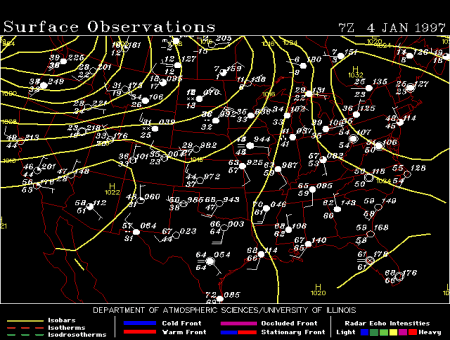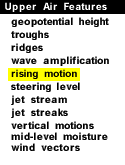
|
Warm and cold advection influence vertical air motion. Warm advection results in rising motion which leads to falling pressures at the surface, while cold advection leads to sinking motion, causing pressures to rise at the surface. The sequence of surface maps below show the surface pressure fields (isobars) that resulted from the warm and cold advection patterns at 850 mb.

The top map shows an area of low pressure over the northwestern United States and an area of high pressure over the eastern U.S. 12 hours later, there is a noticeable decrease in pressure from Texas to Illinois (region of strongest warm advection at 850 mb) while surface pressures increased in regions where the strongest 850 mb cold advection was occurring.

A cyclone at the surface that moves under an area of warm advection at 850mb is likely to deepen. For this reason, systems at the surface will tend to "phase lock" with systems aloft, and they will propagate more or less together.

wave amplification |
|

steering level |




